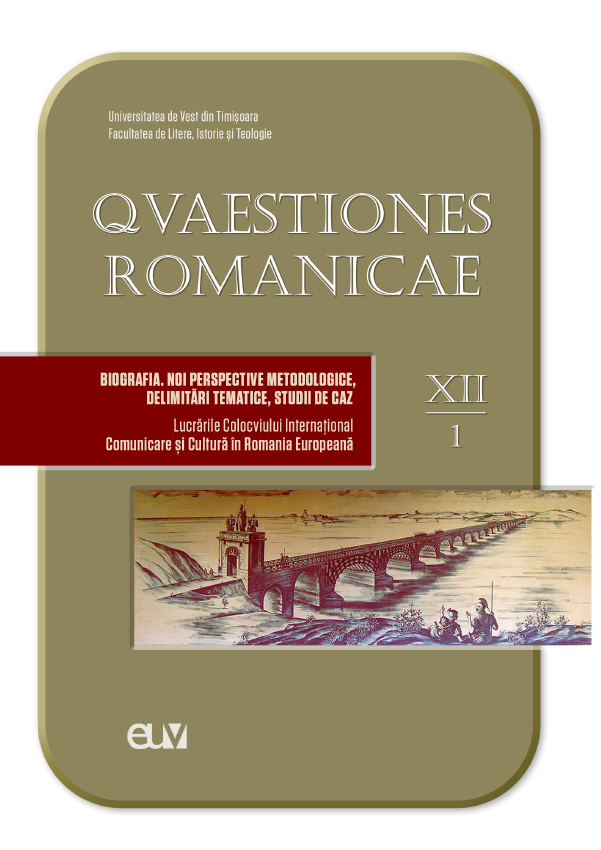Autoficțiune și escatologie în romanul Solenoid de Mircea Cărtărescu
Abstract (Autofiction and Eschatology in Mircea Cărtărescu’s novel Solenoid): The paper follows the ambiguous relation between truth and fiction, between the real biography and the enormous reservoir of potential biographies in Cărtărescu’s novel Solenoid, which points beyond the postmodern games that create a counterfactual autobiography. As more than a merely self-reflexive fiction, Solenoid is a “maximalist autofiction” (Mironescu 2021): an attempt to reconstruct the biography of the profound self, but also a case of hypertrophy capable to ultimately generate a personal myth that substantially modifies representations of the self and the world. By alternating hyper-realistic descriptions and surreal objects, science-fiction motifs, and biblical scenarios, Cărtărescu’s fiction evolves, from Nostalgia and Orbitor to Solenoid, towards transrealism, this narrative mode that underlines the transcendence obsession shared by many of Cărtărescu’s characters. The analysis follows the way themes of the self (body, memory, biography, writing) are subordinated to a metaphysical project, namely the eschatological theme that compresses space and time, generating a series of paradoxes: “a messianicity without messianism” (Derrida); an apocalyptic structure lacking the eternity horizon; a metafictional dimension that questions the purpose of literature and constantly seeks to escape outside the text while in the very process of creating the word-maze.
Keywords: autobiography, autofiction, eschatology, memory, myth.
Rezumat: Lucrarea analizează relația ambiguă dintre adevăr și ficțiune, dintre biografia reală și enormul rezervor al biografiilor potențiale în romanul Solenoid, încercând să arate ce e dincolo de jocul postmodern al recompunerii unei autobiografii contrafactuale. Mai mult decât simplă autoficţiune, Solenoid este o „autoficțiune maximalistă” (Mironescu 2021): o încercare de reconstituire a biografiei eului profund, dar și o hipertrofiere a acestuia până la crearea unui mit personal care modifică substanțial reprezentările sinelui și ale lumii. Prin alternarea unor descrieri hiper-realiste și a obiectelor suprarealiste, a unor motive science-fiction și a scenariilor biblice, proza lui Cărtărescu, de la Nostalgia și Orbitor la Solenoid, evoluează către transrealism, un mod narativ ce pune în relief obsesia transcendenței care marchează protagoniștii acestor proze. Analiza urmărește felul în care temele sinelui (corporalitate, memorie, biografie, scriitură) sunt subordonate unui proiect metafizic, unei teme escatologice care comprimă spațiul și timpul, generând o serie de paradoxuri: o mesianicitate fără mesianism (Derrida), o narațiune apocaliptică lipsită de perspectiva eternității, o dimensiune metaficțională ce chestionează rostul literaturii și caută constant ieșirea în afara textului chiar/simultan cu în procesul de creare a labirintului textual.
Cuvinte-cheie: autobiografie, autoficțiune, escatologie, memorie, mit.
